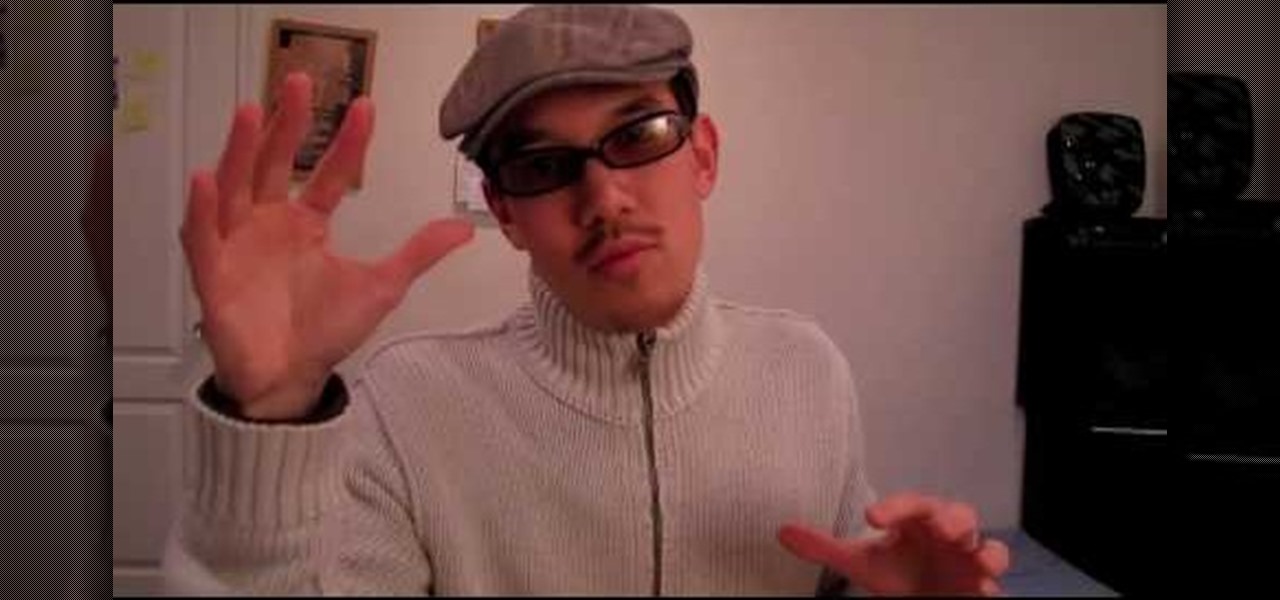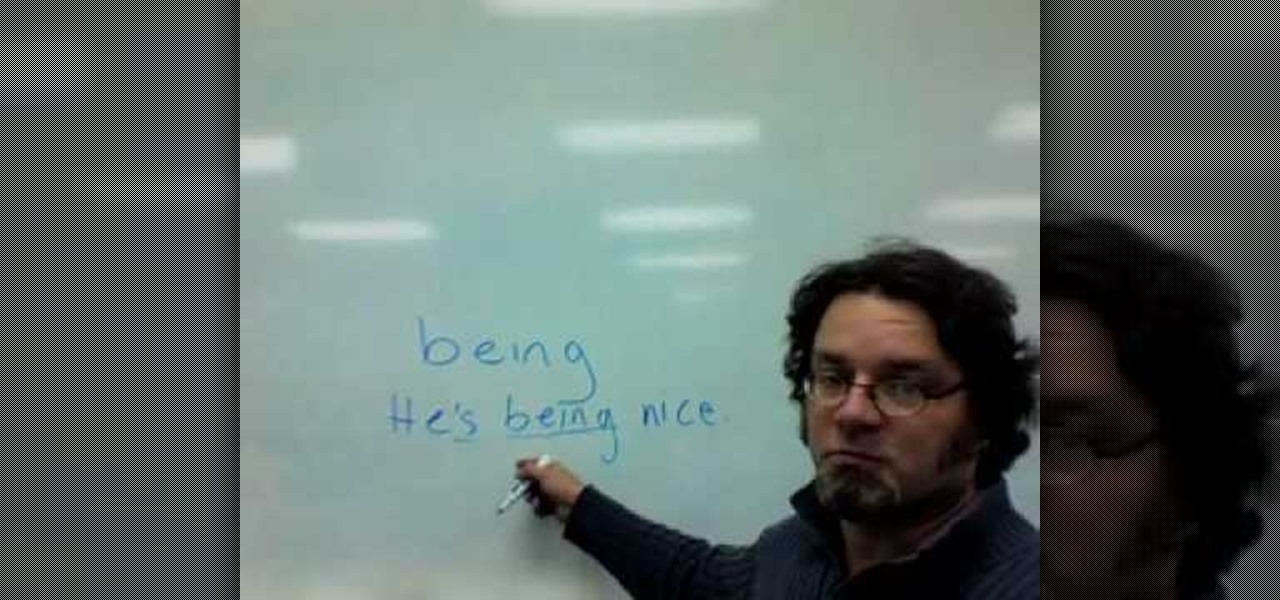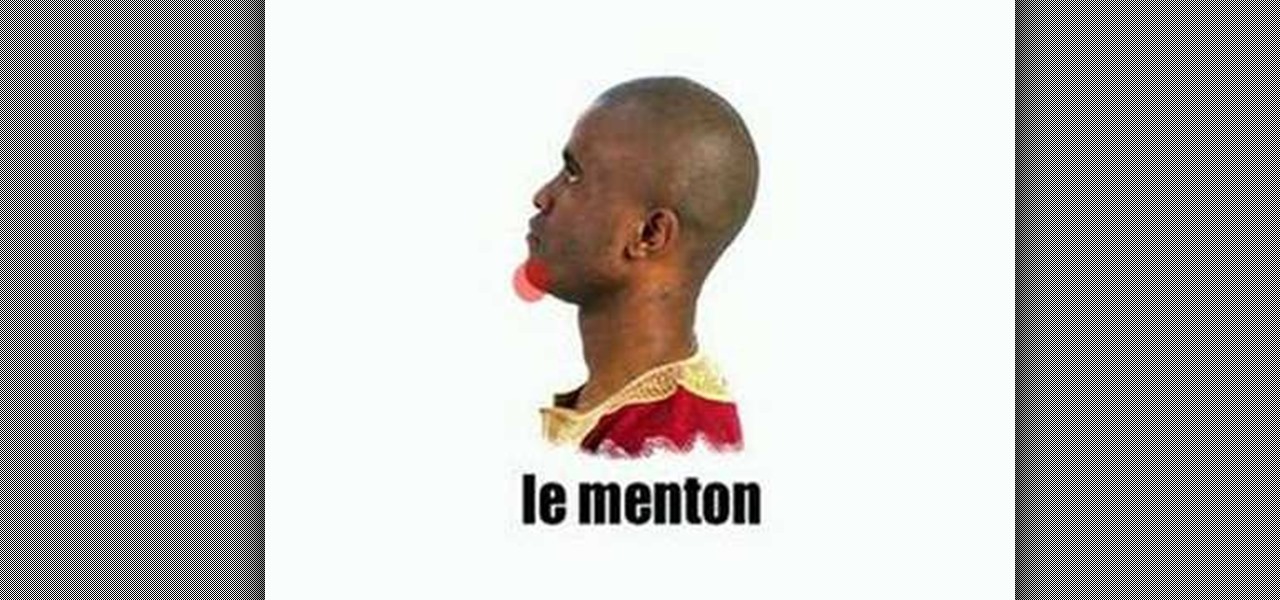Hot Language Posts

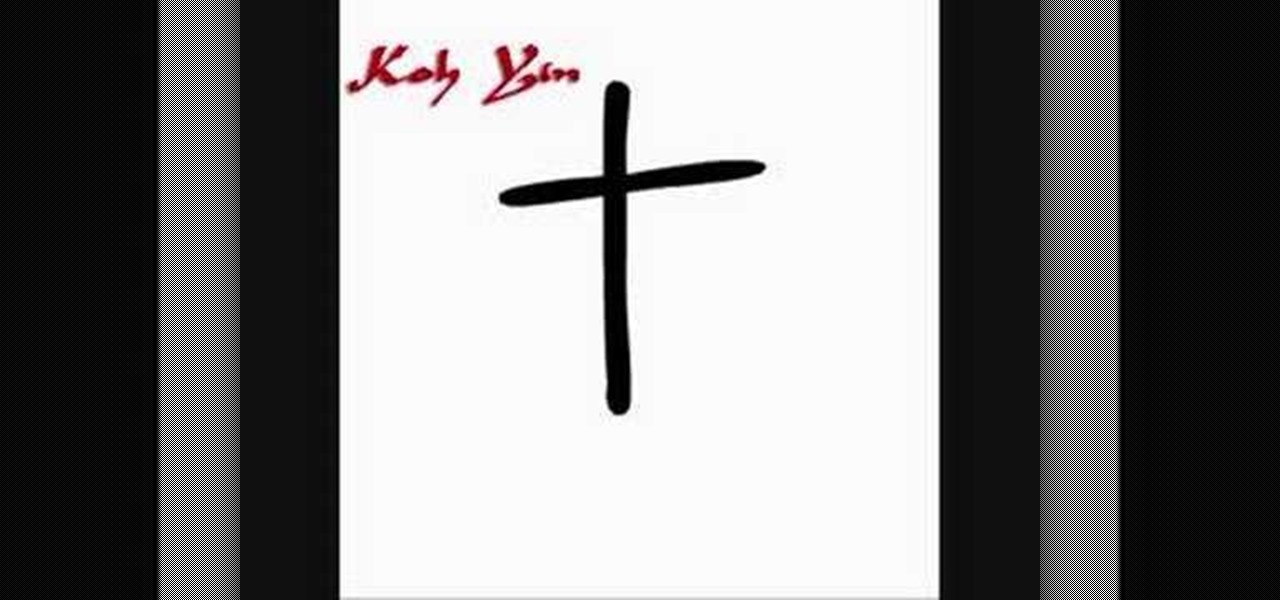
How To: Write "tree" in Japanese
If you have ever wanted to learn Japanese or even just a few words in the language then this video is perfect for you to begin with. This video will show you how to write the word "tree" in Japanese in a fun creative way. The video takes a picture of an actual tree and redesigns it to become the word tree, but if you want to just learn how to write the word on it's own then a grab a piece of paper, pen and begin with making a horizontal stroke. Next, make a vertical line through the horizonta...
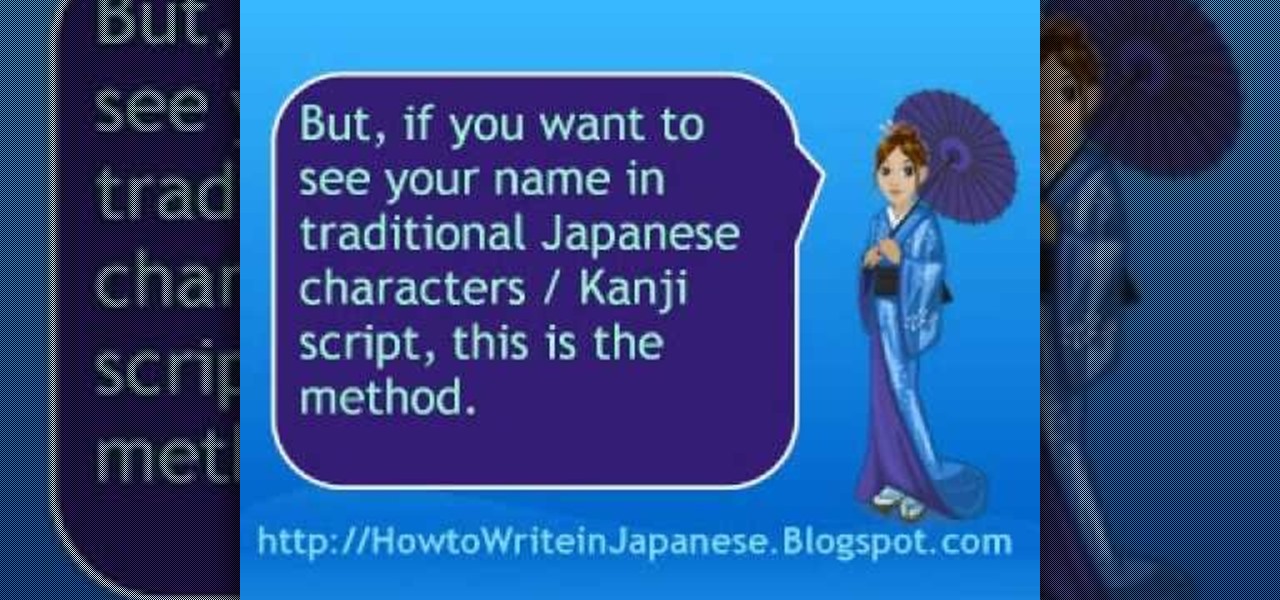
How To: Translate your name into Japanese in 2 easy ways
This is a video that explains to a person how to write their name in Japanese. The woman shows two ways as to how to translate your name in Japanese. The first is how the name is pronounced, and the second way is to translate your name based on the meaning. Usually the name is translated based on pronunciation in the native language. The name is pronounced similarly but not exactly the same. For example Rachel is pronounced "Reicheru". She also shows a website where more information can be fo...
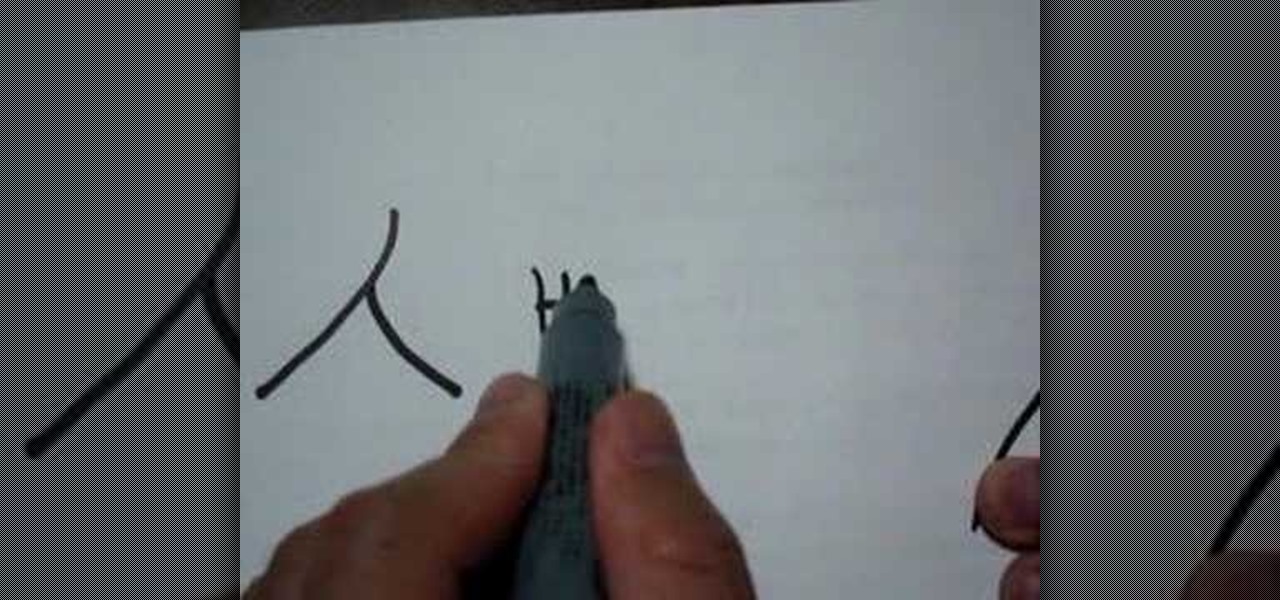
How To: Write the Japanese character, "hito" meaning "human"
Writing the word “human” using Japanese characters or writing (also known as kanji) is deceptively easy. It can be completed in as little as two downward, curving strokes. Beginning from the top, draw a line downward, curving the direction of the pen or pencil slightly to the left as you go. Next, find the halfway point of the line you have just drawn. Once you have found the halfway point, draw a line from the halfway point downwards and curving slightly to the right. The end result will loo...
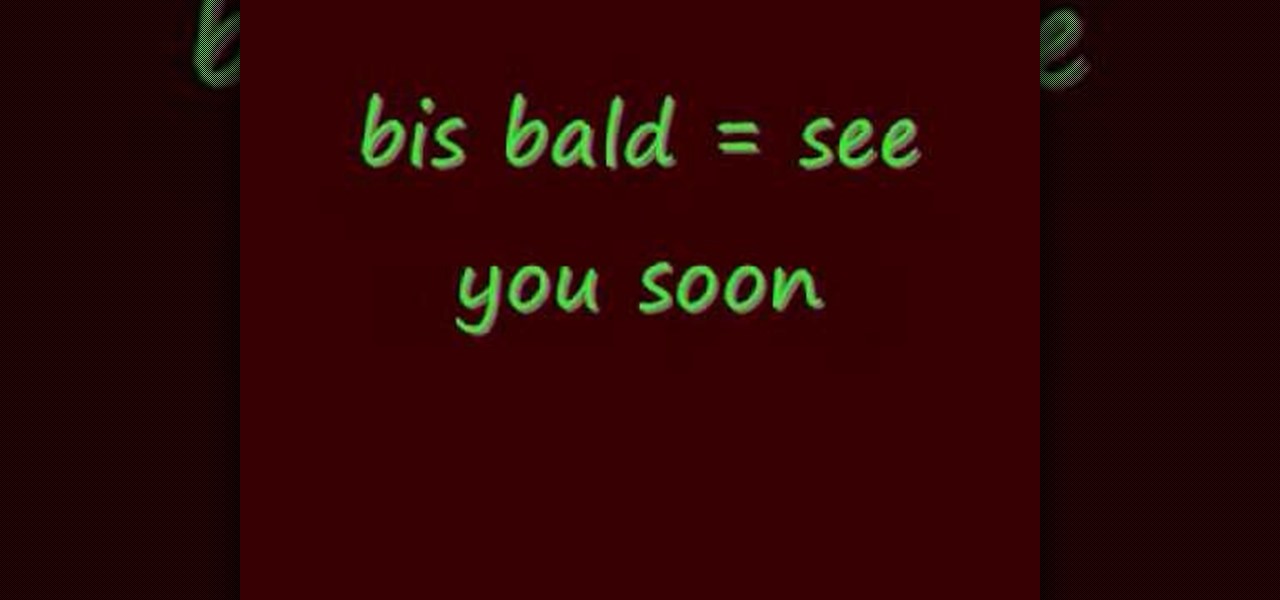
How To: Say hello, please & thank you in German
This video teaches viewers how to say common phrases in German such as Hello, Please and Thank you! To say Hello, good day in German you would say 'Hallo, guten tag'! The portion of the phrase 'hallo' means Hello in German. Hello, Good morning in German is 'Hallo, guten morgen'. Hello, good evening means 'Hallo, guten abend' in German. 'Gute Nacht' means good night in German. If you would like to say Goodbye or See you again in some time, you would say 'Auf Wiedersehen' in German. If you know...

How To: Say basic greetings & phrases in Polish
Learn how to say common greetings & phrases in Polish. In this video, learn how to say "good morning" or "good afternoon", "hi", "goodbye", "bye", "bye bye", "goodnight", "same to you", "how are you?", "fine, thank you", "not too good", "so-so", "and you?" and how to ask "what's your name?" "where are you from?" and more.
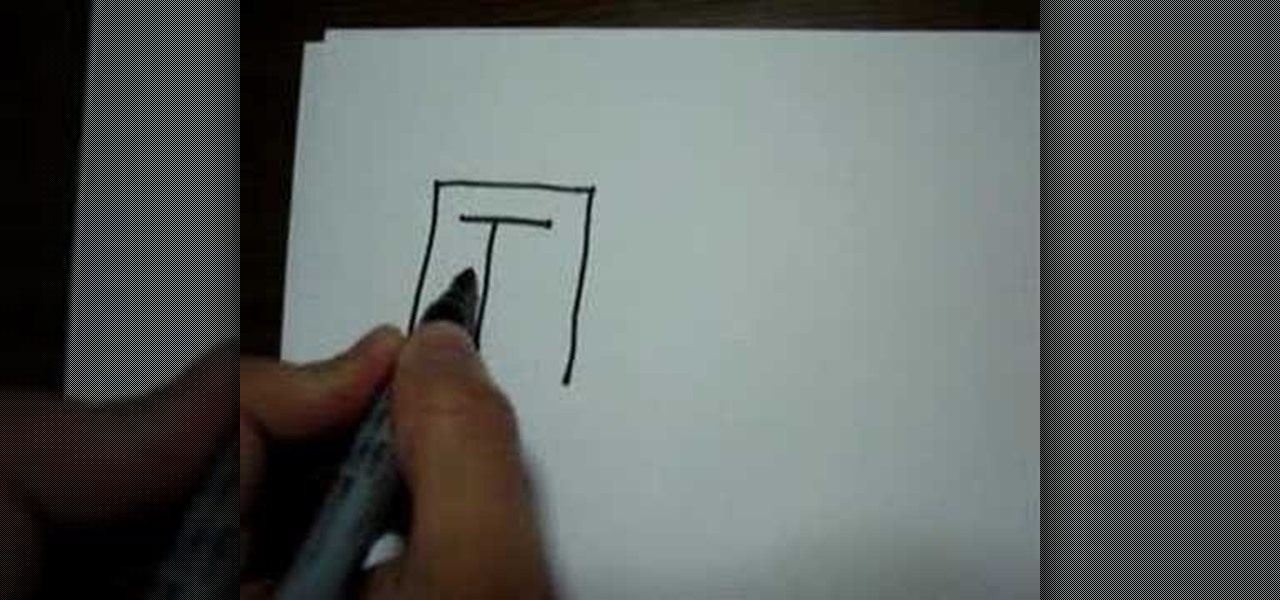
How To: Write the Japanese character "kuni" meaning "country"
This video tutorial is about Japanese language, and it shows us how to write the Japanese Kanji character "kuni" meaning "country". Our first step is to write a line starting from the top left and finishing in the bottom left. Remember that the order of the strokes in Japanese language are very important; there is just one possible stroke order for every character. After making the first stroke, you will need to make other two lines with only one stroke, starting from the same point than he p...
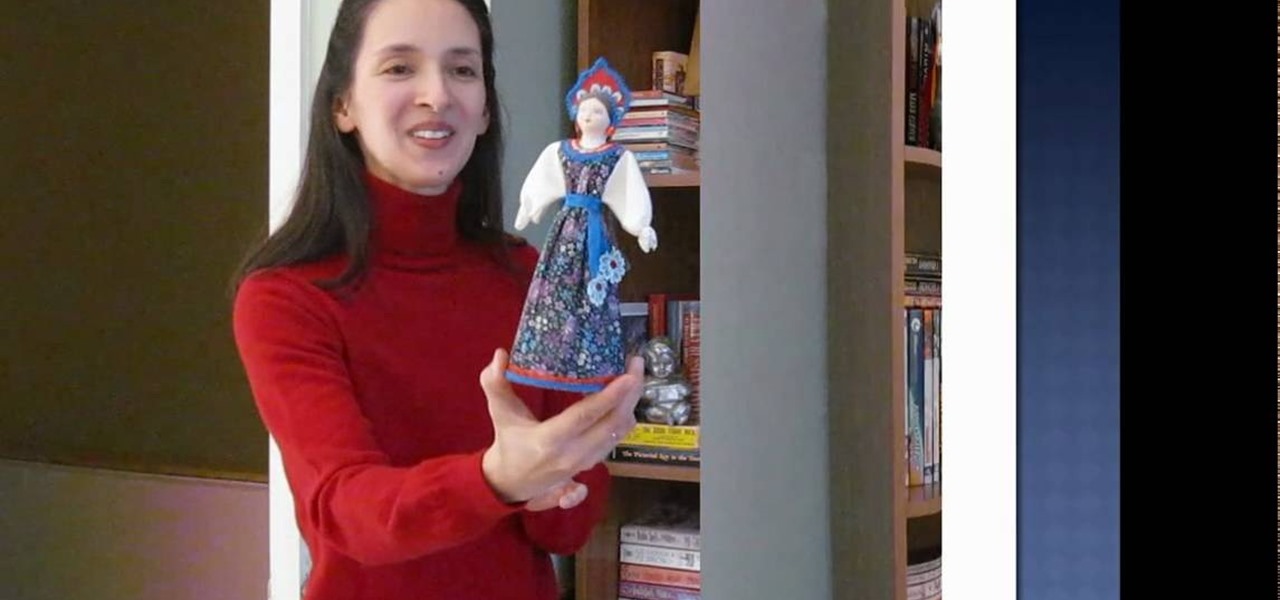
How To: Use articles in the English language
An two part introduction or overview of English articles: a, an, the, and the zero article. This is for the advanced or intermediate student. Part one presents basic rules or guidelines for using English articles. Part two summarizes the basic rules for using English articles and offers practice.

How To: Use the word 'got' in the English language
In this video it is explained how to use the words "got" "got to" and "gotta'". "Got" is the past tense of the word " get". Sometimes Americans say "have got" in place of "have" or "got" in place of "have". For example there is a sentence "I've got my wallet". Some Americans say "I have my wallet" and some may say "I got my wallet". All of them are correct. "Gotta'" is used in place of "have got to". For example there is a sentence" I have got to go". Some Americans may say

How To: Hold a dinner conversation with Japanese etiquette
This video language lesson explains how to hold polite dinner conversation in Japanese, focusing on traditional Japanese table etiquette. At the beginning of a meal, a typical thing to hear is "itadakimasu". Translated literally, it means, "I will partake." When finished with a meal, everyone says, "gochiso-sama", which is a way of expressing respect for the meal. The names of the utensils used in a Japanese meal are "hashi" (chopsticks), spoon (same as in English) and "foh-ku" (fork), "coppu...
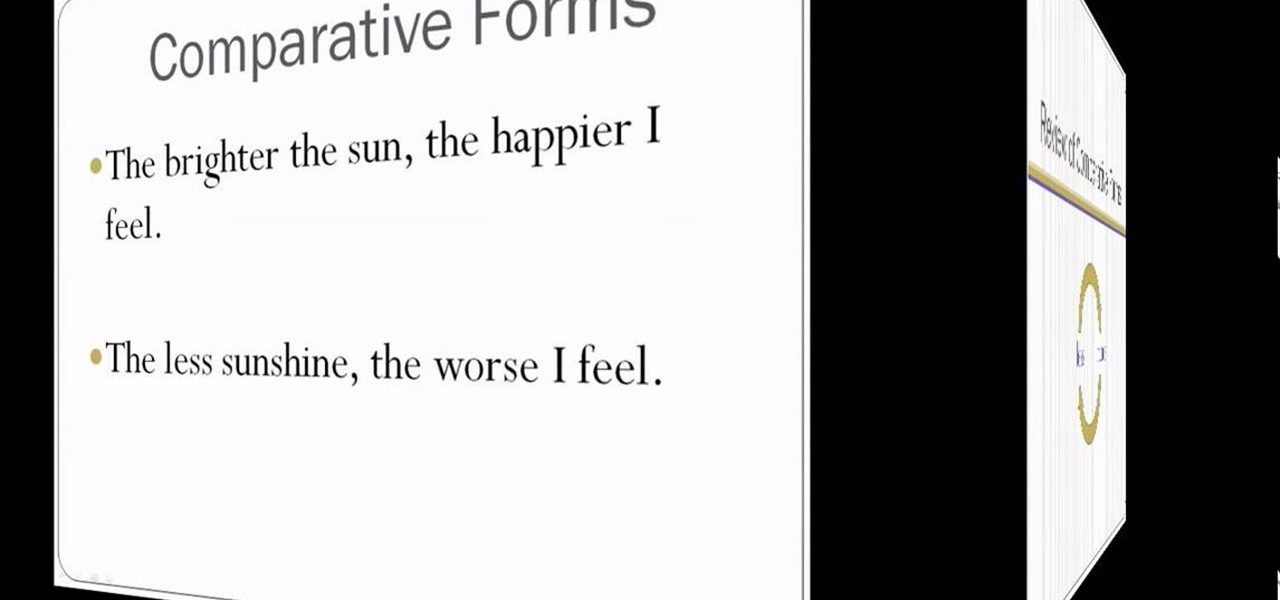
How To: Use double comparatives in the English language
This is a tutorial segment of Double comparatives of English Grammar. In this lesson, the instructor is explaining about how to express a cause and an effect in a easier way with examples. She says that it’s the relationship where one thing makes a change on another or one factor say for example sunshine, produce a result in another by making us to feel happy. Comparative forms are used to express a cause and effect. Words like brighter, happier are examples for that. For example, in the sent...

How To: Use the 'stop' verb in the English language
The verb "stop" in the English language can be used with a gerund and an infinitive. The word "stop" has different meanings depending on how it's used. Look at the sentence, "I stopped eating fast food." Stopped is used in the past tense and eating is a gerund, or a word that describes an activity and functions as a noun. Look at the sentence, "I stopped to eat some fast food." In that sentence, there is an infinitive. The first sentence means I no longer eat fast food. The second sentence me...
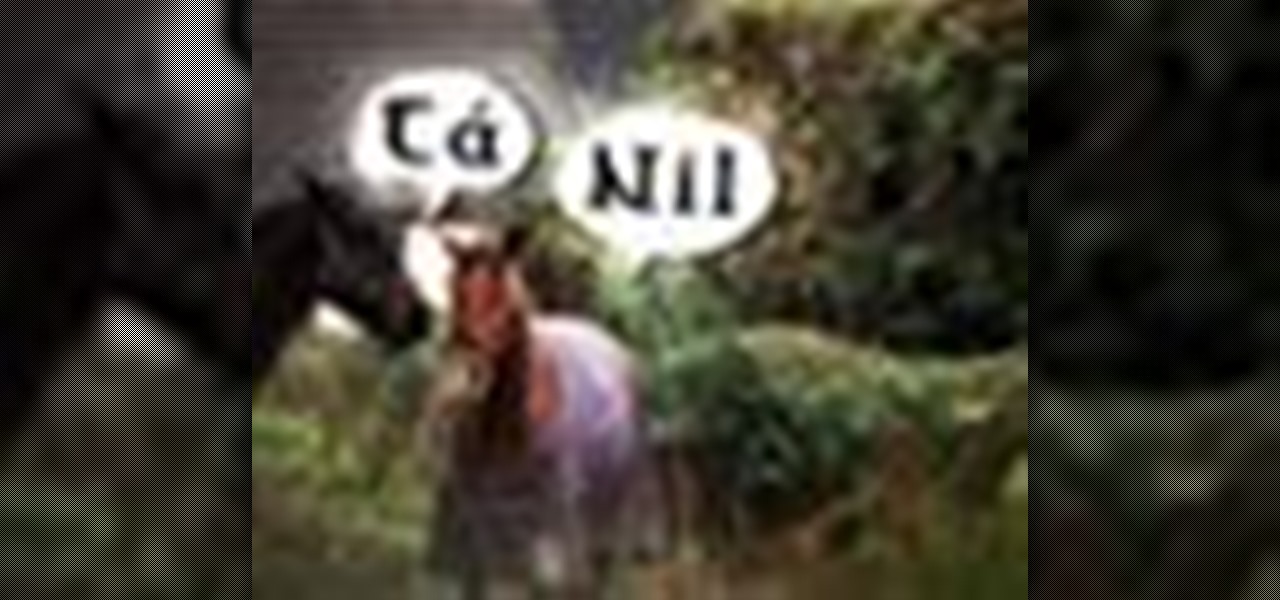
How To: Say seven key Gaelic phrases
The best way to win friends over in a foreign country is by breaking the ice and showing your enthusiasm with your best effort at their language. Practice your Gaelic for travel or just for fun with friends.

How To: Discuss future plans in Spanish
This lively video explains how to discuss future plans in Spanish. Professor Jason explains that it's not that difficult for English people learning Spanish as the same construction is used for 'going to'. There is also a separate future tense, using one set of endings that you simply add to the infinitive, but adding a stress on the final syllable, except for the first person plural. Of course, it's not quite so simple with irregular verbs, which have a special stem which has to be learned b...

How To: Rhyme
From nursery rhymes, to rap songs, to love poems, rhyming is an important part of the English language. If you're feeling a little shaky on your rhyming abilities, glance over some of these simple rules and you'll be off and rhyming again.
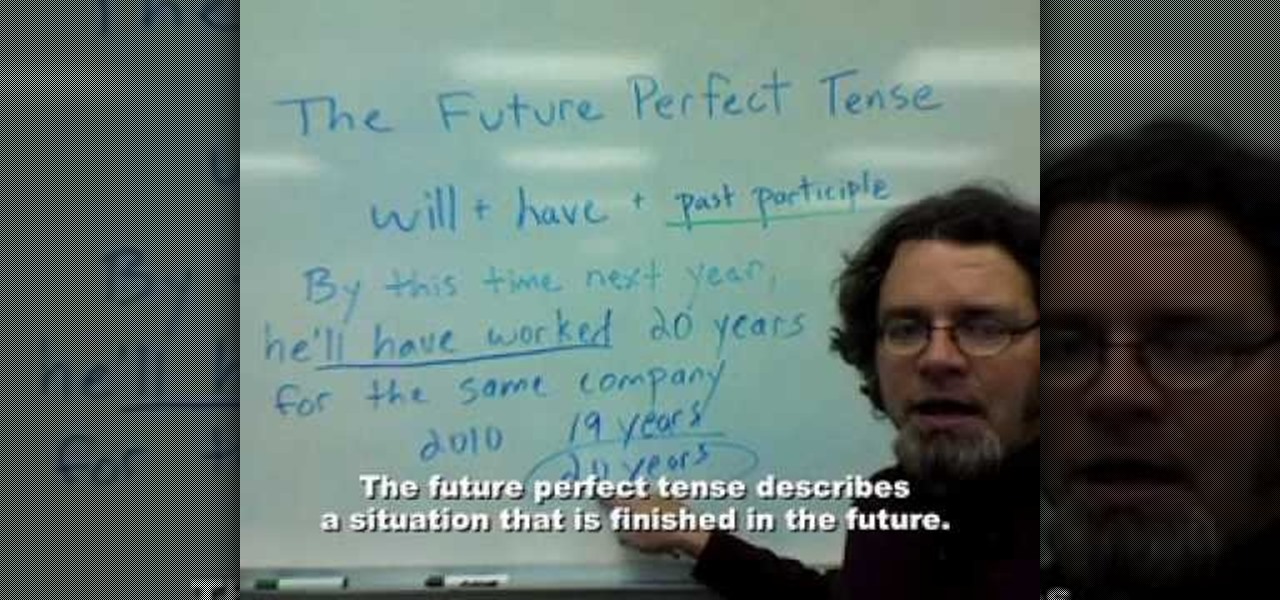
How To: Use the future perfect tense in English easily
The future perfect tense describes a situation which is finished in the future. This video tells us how we can use future perfect tense easily. It gives us a deep insight through the grammatical aspect of future perfect tense. It shows us how to use the helping verb i.e "will" with the third form of verb to form a statement in future perfect tense. the basic formula for making a correct statement in future perfect tense is "subject + helping verb + past participle (v3). It's easy to remember ...
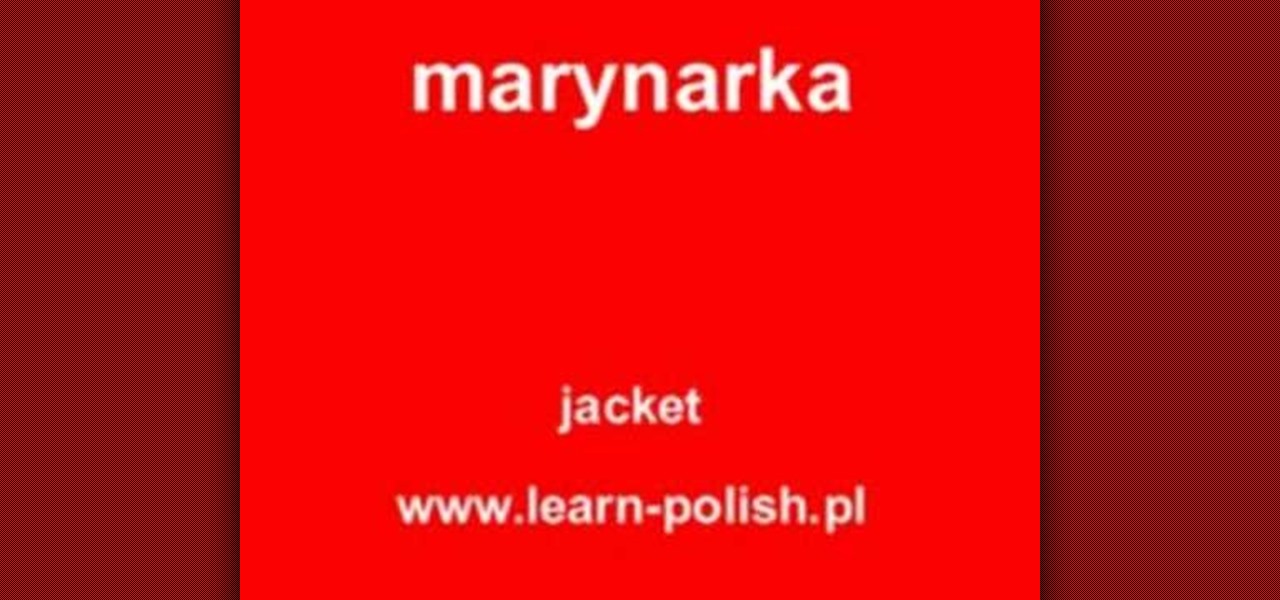
How To: Say "jacket" in Polish
This short video will teach you how to say “jacket” in the Polish language. To learn how to say the word "jacket" in the Polish language follow this short video. The word in Polish for "jacket" is "marynarka". Repeat the word slowly a number of times to help you to memorize it. You have to say ma-ri-nar-ka.
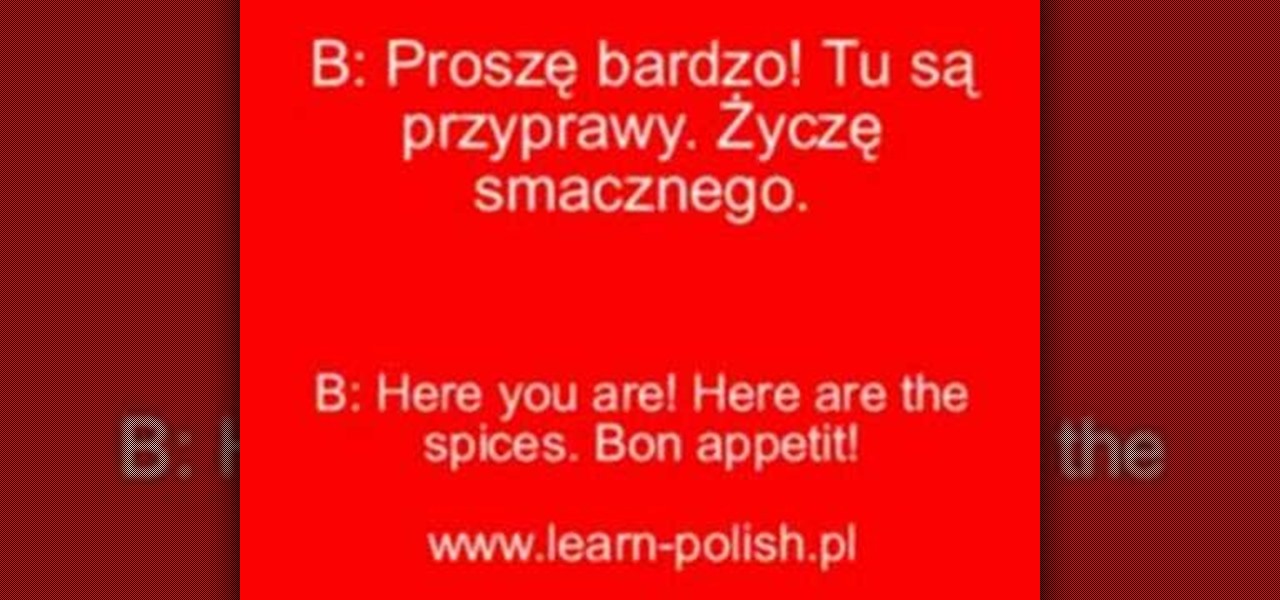
How To: Say restaurant related words & phrases in Polish
Follow this video which will teach you some words in the Polish language very easily. This video will guide you through the words and phrases in Polish you will likely use when you visit a restaurant. To say the phrase "in the restaurant" in Polish you have to say "W restauracji". To ask for the menu when you are at the restaurant you have to say "Czy mozna prosic karte?". When the waiter asks you what he will bring you to eat or drink he would say "Slucham, co dla Panstwa?" in Polish. An exa...
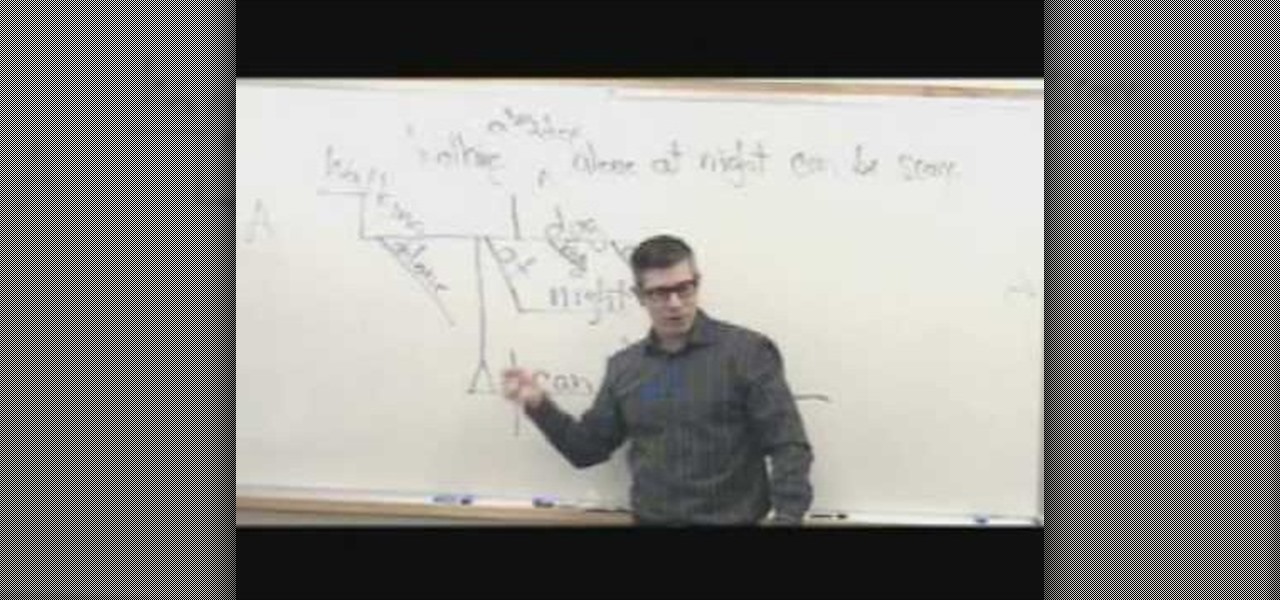
How To: Diagram gerunds & gerund phases
For those who don't know, a gerund is a noun whose root word is formed from a verb. Anyone interested in brushing up on their grammar skills should view this video by Yossarian on how to diagram gerunds and gerund phrases. Yossarian uses various sentence examples to break down the subjects and verbs to find gerunds and gerund phrases. Learn how to break down the components of any sentence to find the gerund and gerund phrases by following this video tutorial.
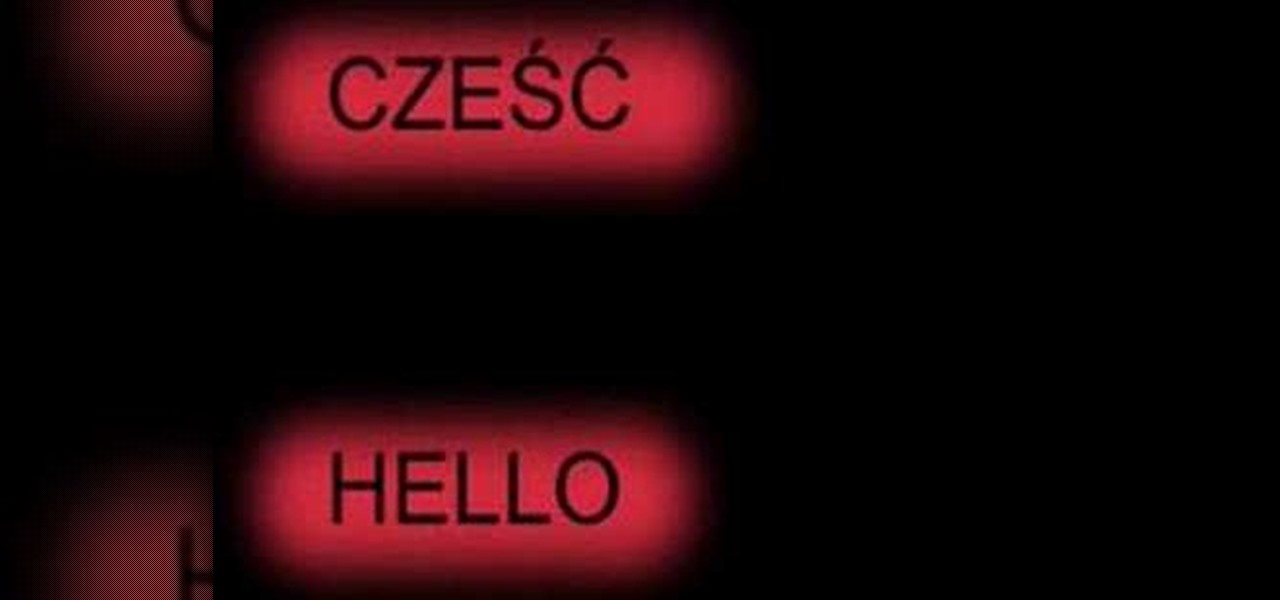
How To: Say "hello" in Polish
Learn how to say and spell out "hello" in Polish. This is a quick twelve minute video which shows the spelling and says the pronunciation of the word "hello" in the Polish language. This steps and/ or guidelines would show the easiest way to pronounce the word hello in the Polish language. The English word hello is translated as "Czesc‡" in the Polish language. The spelling may look like an easy word to pronounce but in reality, the pronunciation is different from the spelling of this word. T...

How To: Say "I love you" in Polish
Learn to say three romantic phrases in Polish, such as "I love you", "You love me", and "We love each other". When it comes to learning key phrases in different languages, nothing beats good old fashioned repetition. Speak the phrases one at a time, one after the other. Then repeat, as often as necessary, until you get them correct. Don't worry if you mess up, keep going! It can take some time to get it right.
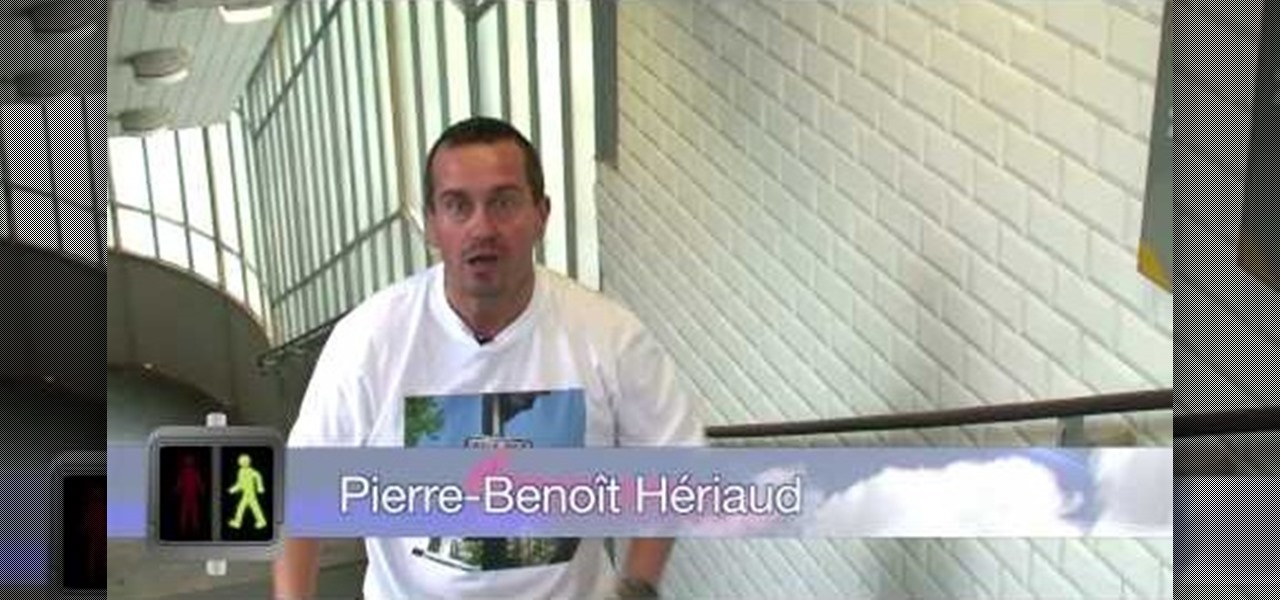
How To: Understand & use expressions "dès que.." & "ne...plus"
This video shows how to use the French expressions "das que..." and "ne...plus". The expression "das que..." means "as soon as".”ne..plus" means "no longer". You can use these expressions in sentences. " Je ne veux plus venir" means “I don’t want to come any longer". "Des que je me leve je prends un cafe" means " After I get up in the morning I have a coffee" These are regular sentences people use every day in the French language just as used in the English language.

How To: Pronounce the English /r/
If you are learning the English language make sure to follow this video which can better explain to you how to pronounce the letter R. When speaking in the English language we may often make common errors on how to pronounce the letter R in the words we use. One tip to pronounce the letter r better is not to touch the top of our mouth with our tongue when saying the letter r. Secondly, you have to make your lips shape in a tightly rounded manner to say the letter r accurately. You could also ...
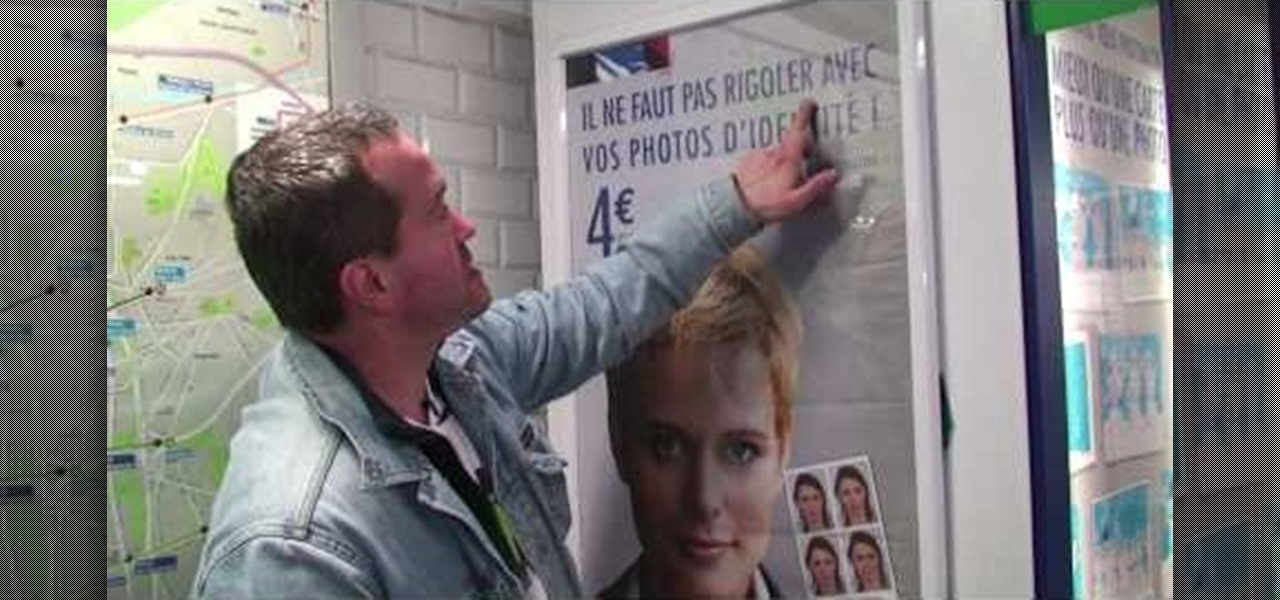
How To: Understand & use the phrase "il faut"
In this video tutorial, viewers learn how to speak French. This video focuses on the phrase "il faut" and the French infinitive. This video is the third episode of a ten episode series. Viewers learn how to form sentences and the meaning of some French words. This video is very detailed and descriptive. It gives a great, easily understood explanation for viewers. This video will benefit those viewers who want to learn the French language or want to become more fluent in speaking French.
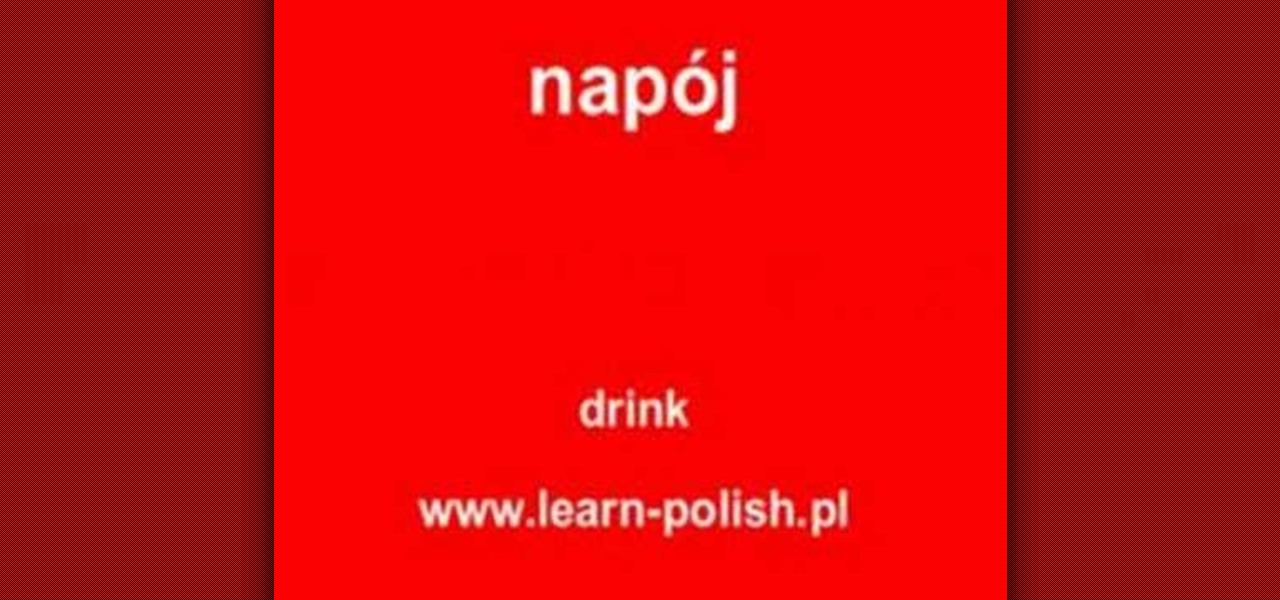
How To: Say "drink" in Polish
This video will teach you basic and useful words in Polish. The video sets out the word used for 'drink' in the Polish language. The word in Polish is 'napoj'. To learn the word listen to it and repeat it a number of times. This will help you to memorize it. Spell it out as na-poj. Visit the website to learn more Polish words.

How To: Say "TV set" in Polish
Learn how to say "TV set" in Polish from this video in simple steps. First find out the Polish word for "TV set" in Polish language which is "telewizor". Now spell out the Polish word carefully without any mistakes. Speak out the Polish word slowly and keep trying until you pronounce it correctly. Now try to speak the word fast and practice until you are good enough.
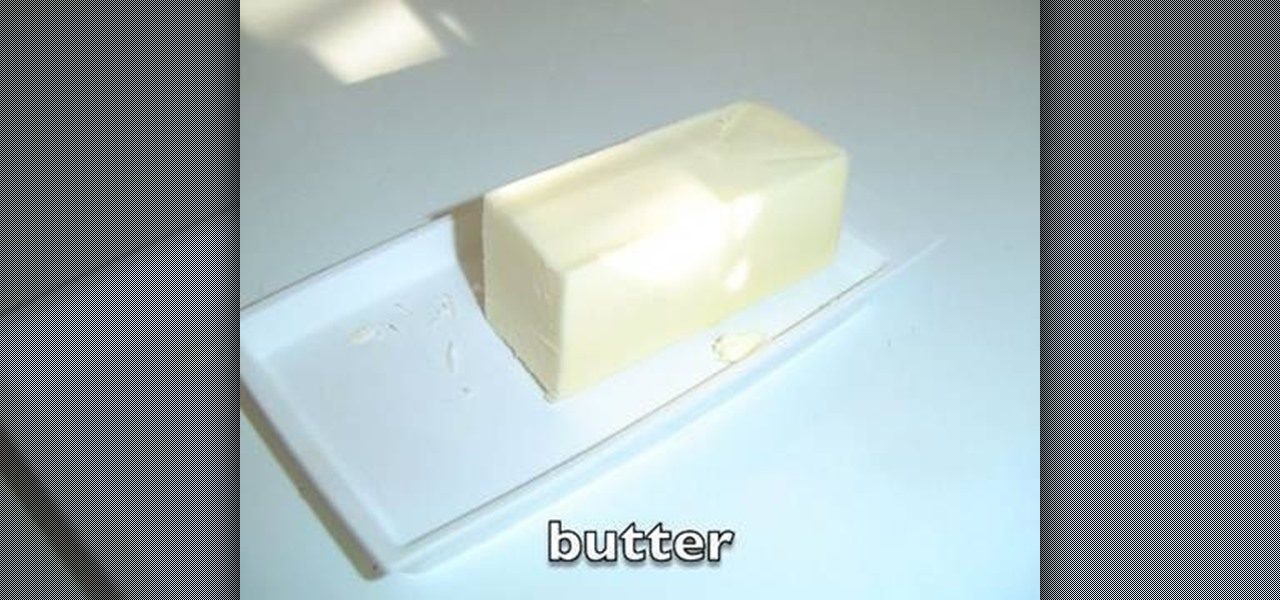
How To: Practice saying the "t" sound in the middle of words
In words like bottle and mitten, the "t" really isn't a "t" sound; it is more of a "d" sound or a very fast "t" sound. Practice the "t" sound with the words button, carton, brighten, tighten, fatten, eaten, rotten, matter, butter, flutter, water, bottle, settle, and metal. In American English, the "t" sound is very difficult to hear in some words. An example of this is the word butter, where the "t" sounds more like a "d." Remember, the way people speak English in the United States is differe...

How To: Use present tense & present perfect tense in English
In this two part tutorial an English teacher shows some differences between the present tense and the present perfect tense. You will learn the basics, in how to ask a proper question. Watching this will allow you a little more understanding of the English language and how to use it.
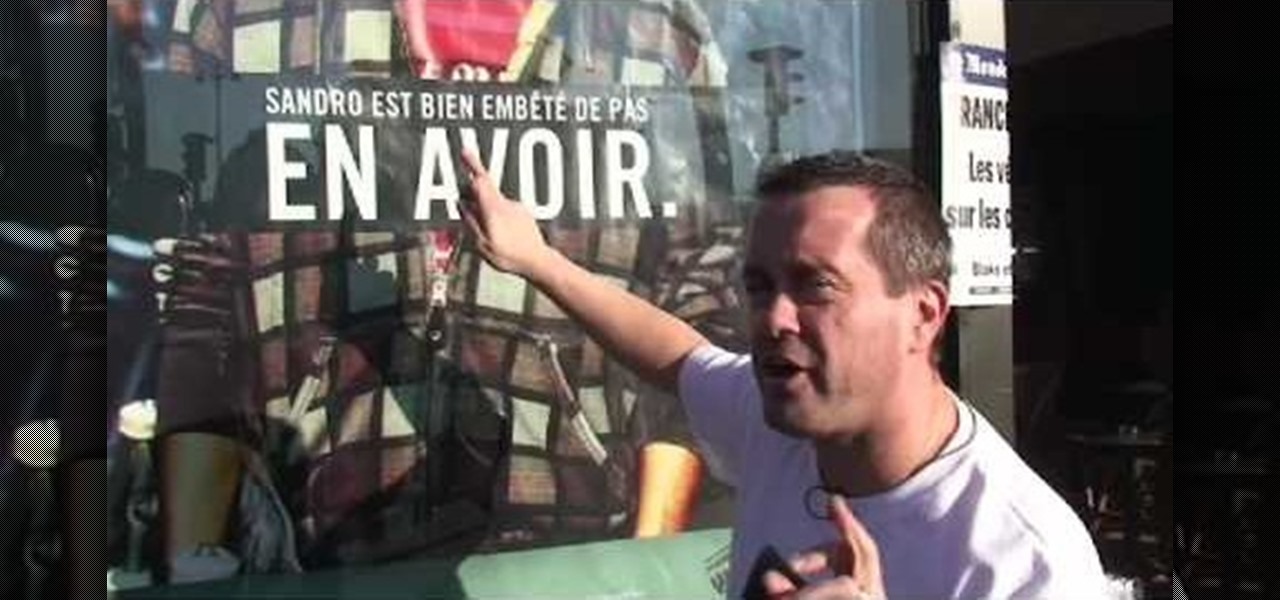
How To: Understand & use adjective agreements & the word bien
Pierre-Benoit Heriaud explains the various meanings of the French word bien. Firstly, there is one obvious meaning the common "good" or "acceptable". However, one can also use it in sentences such as "Il fait bien froid" to present the current status of the weather as being excessive in one way. In this case, it can easily be replaced with the adverb "vraiment", not losing any bit in meaning. Lastly, the word "embete" might also be a trap in that it usually means annoyed, but can be associate...
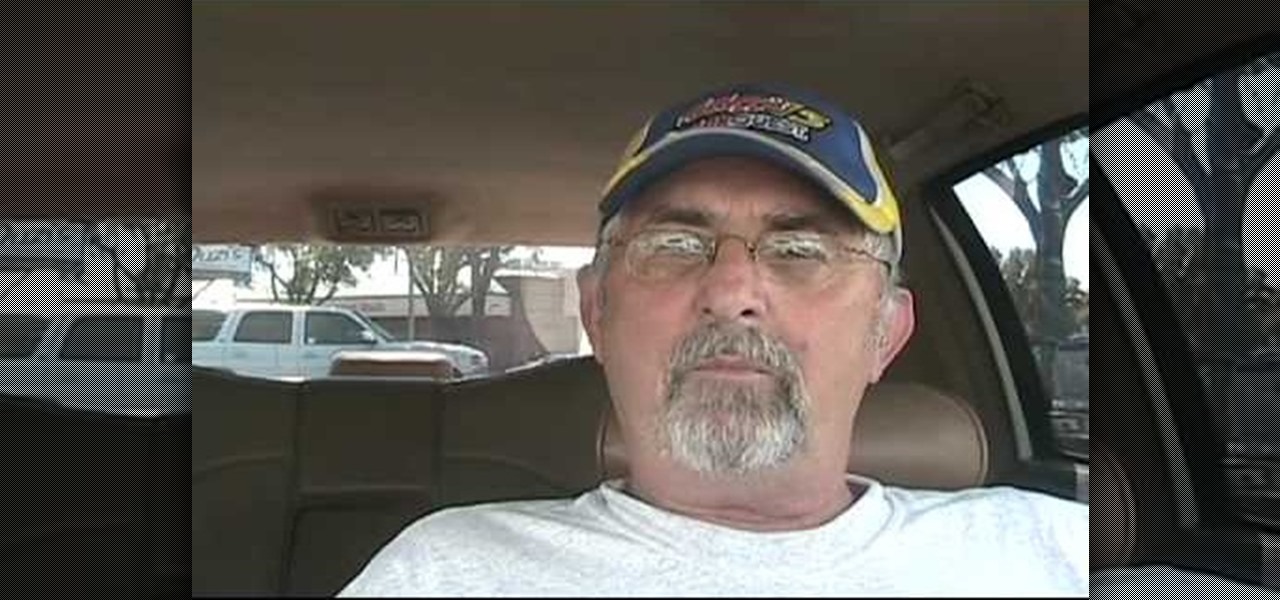
How To: Properly use "how much" & "how many" in Tagalog
As the Philippines is becoming more and more well known, so is the main dialect of this beautiful island country: Tagalog! Bud Brown, also known as MagicMaximo, takes you through the nuances of this not (yet) well-known language. In this video Bud explains the difference between "Magkano" (how much) and "Ilan" (how many), breaking down not only the Tagalog words themselves, but their English counterparts, what they mean, how they can be used in a sentence effectively, and in what instances it...

How To: Say essential words in Tagalog
This video is a language lesson in Tagalog. You will learn how to say that you like something or don't like something, that you know or don't know something, and to ask questions beginning with "Do you like", "Do you know" and "Do you understand". The way to ask someone if they like something is, "Gusto mo ba?" To answer positively, say, "Gusto ko!" To answer negatively, say, "Hindi ko gusto." To ask "Do you know?", say "Alam mo ba?" To answer positively, say, "Alam ko." To answer negatively,...
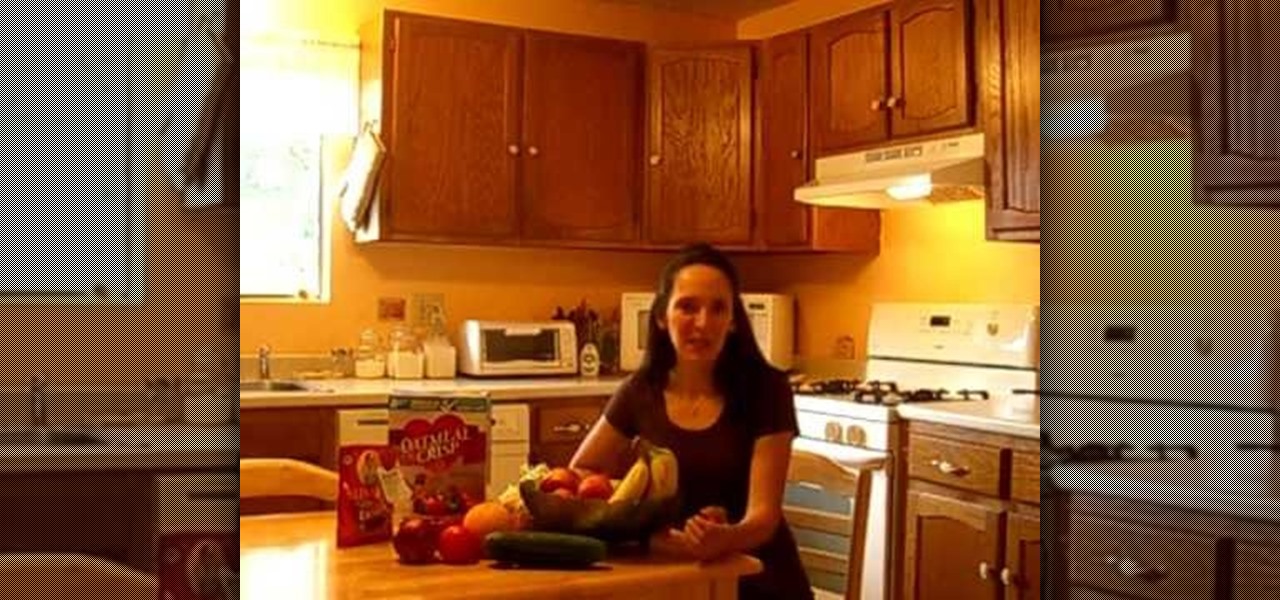
How to Speak English: Verb "be" in the present tense
ESL teacher Jennifer Lebedev teaches the proper usage of the English verb 'be' in the present tense. The verb 'be' has three forms in the present tense: 'am', 'is', 'are'. Sentences are formed with a subject and a verb. To make sentences with the verb 'be', use the correct form with the subject. Subjects are nouns and pronouns (people, places and things). Use 'am' for the pronoun 'I', e.g. 'I am hungry. 'Use 'is' for singular nouns (one thing) and the pronouns 'he', 'she', 'it', 'this', e.g. ...
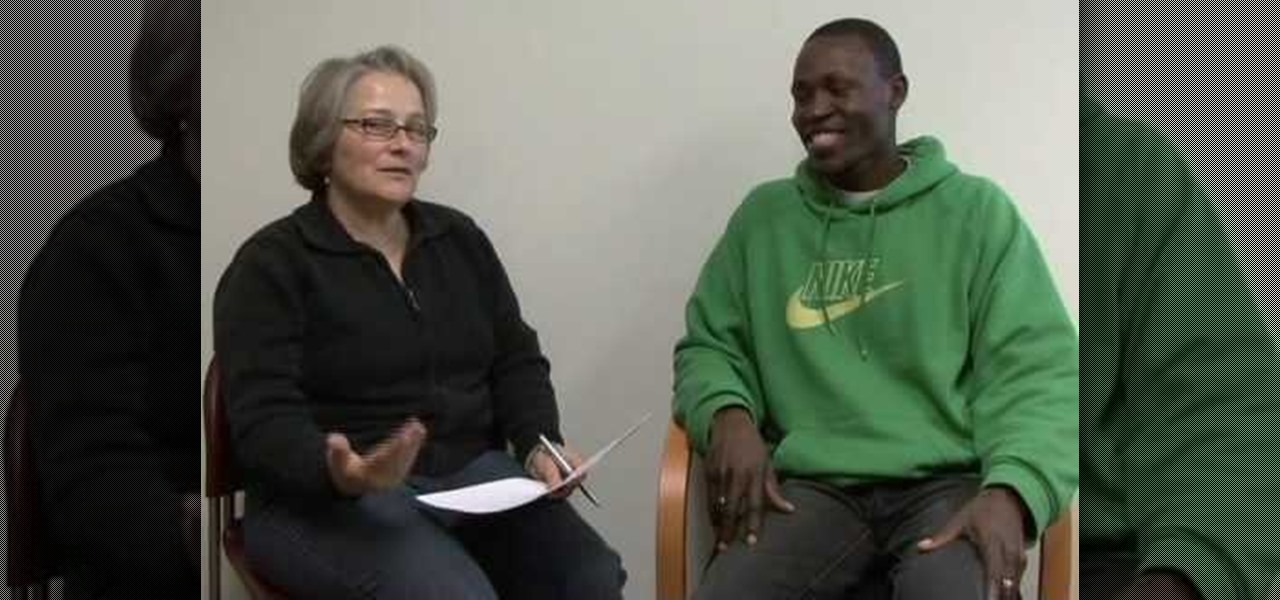
How To: Say basic greetings & more in Haitian Creole
In this video from pxmedia Lisa and Lionel teach us how to say basic greetings and more in Haitian Creole. Some basic greetings that are gone over here are "Hello", "How are you", and the various responses to that question. "What is your name" is another question they translate. And "My name is". "Please" and "thank you" are next to be discussed along with "You're welcome." "Excuse me", and "bye" are next up. Two important things are "I cannot speak Creole" and "Do you speak English?" Next to...
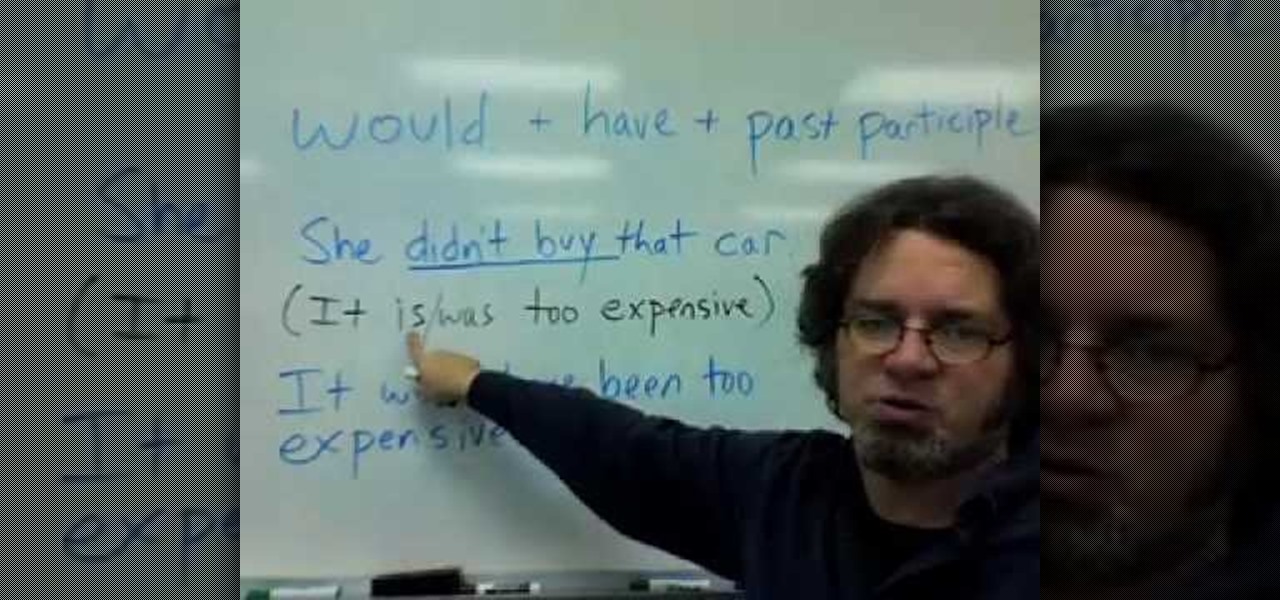
How To: Describe situations that didn't happen in the past
This video shows us how to describe the situations that are opposite of the future perfect tense. Here it is shown how to describe the situations that did or did not happen in the past using would, have and past participle. He gives us 3 very good examples that are describing such situations. In these examples he describes a situation which happened in the past which is actually a negative and uses a fact that is described in the present tense to give the reason why that situation ended in a ...

How To: Use "live" as a verb & adjective in English
Paul, an English teacher, gives a lesson on the difference between the word "live" as a verb and as an adjective. To make to "v" sound when saying the word, the lower lip has to touch the teeth. "Live" as verb is an action, so you say "I live in Minneapolis". The singular form is "live," and the plural form is "lives". Live" as an adjective is a describing word, so you say "Live TV is fun". "Live"" as an adjective describes the subject of a sentence. "Live" as an adjective can mean something ...
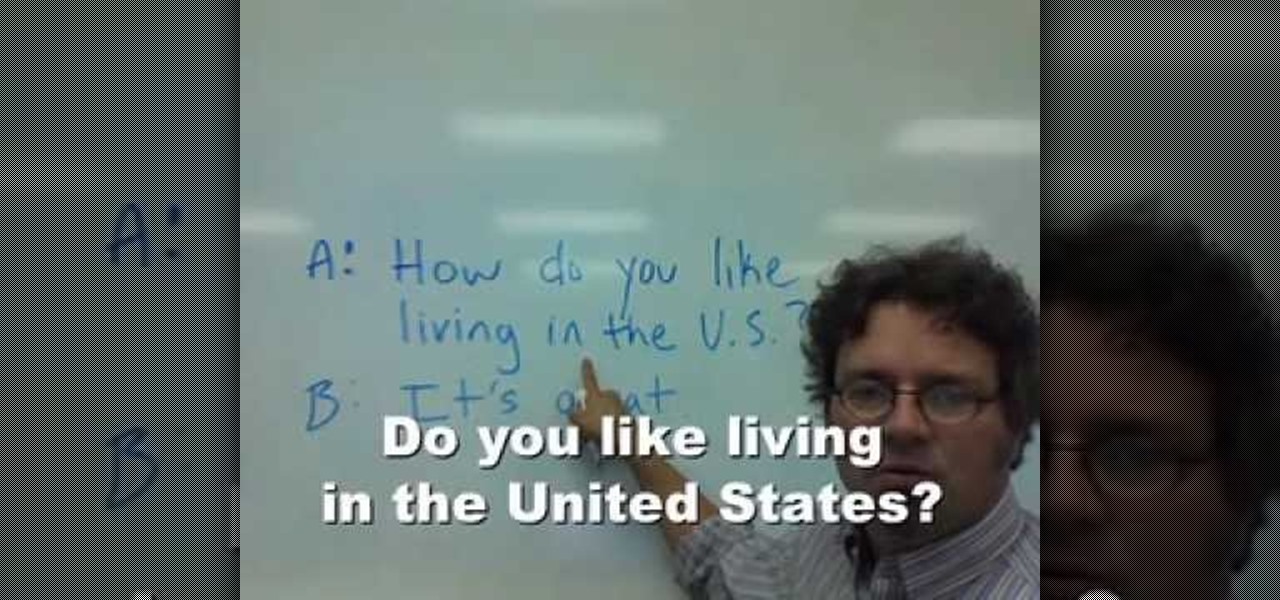
How To: Ask "How do you like your job?" in English
This video teaches English-language learners how to respond to questions beginning with the words "How do you like". There are two types of questions in English that begin with the words "How do you like". The first kind requires an answer in the form of an opinion. The second requires that the answer come in the form of giving instructions. The video explains the difference, then gives several examples for each to model practice. For example, "How do you like the weather?" is a question whic...
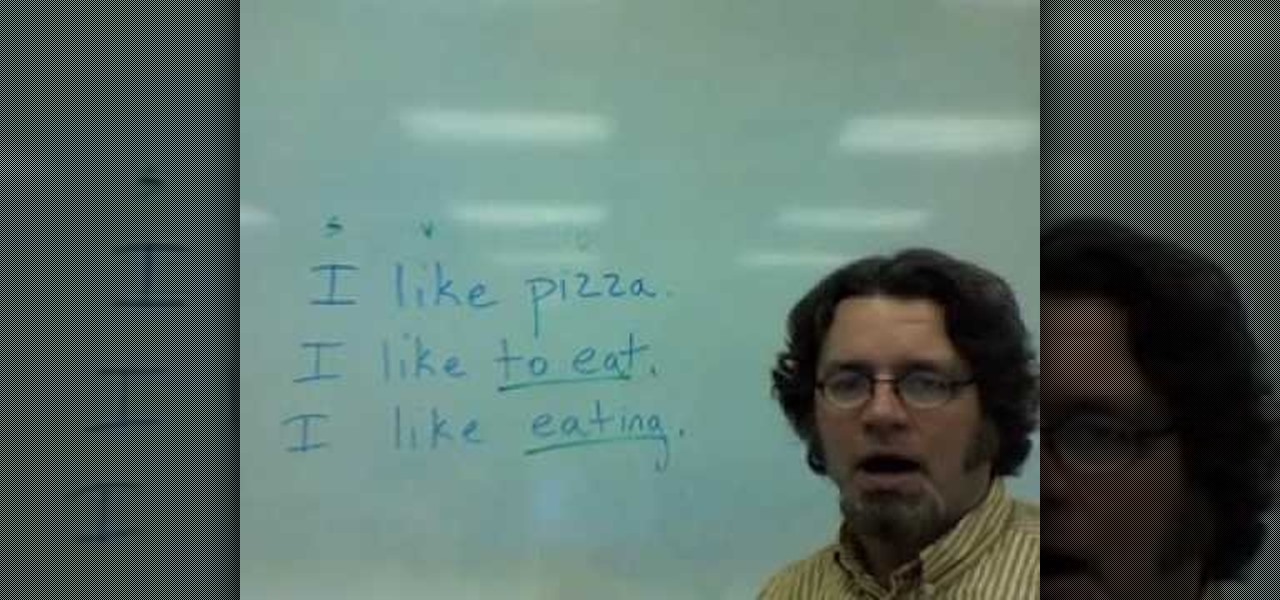
How To: Use the word "like" properly in English
This how to video describes how to properly use the word "like." Since "like" is one of the most misused words in the English language this is great for anyone who is not an English professor. The author begins by describing what types of words you can use the word "like" with and then he presents numerous examples for its correct usage. The video itself will only take about two and a half minuets of your time and will greatly improve your speaking skills.

How To: Use count and mass nouns correctly
Mrthoth will show you how to use, count, and mass nouns correctly. Listen to a sample sentence and try to find the grammatical errors in the sentence. A mass noun ca refers to a whole group of objects, for example you would not say a lot of butter you say a lot of butter. A count noun is basically a noun you can count. You can make it plural and you can put a number in front of it. Like you say it was a lot of pencils.
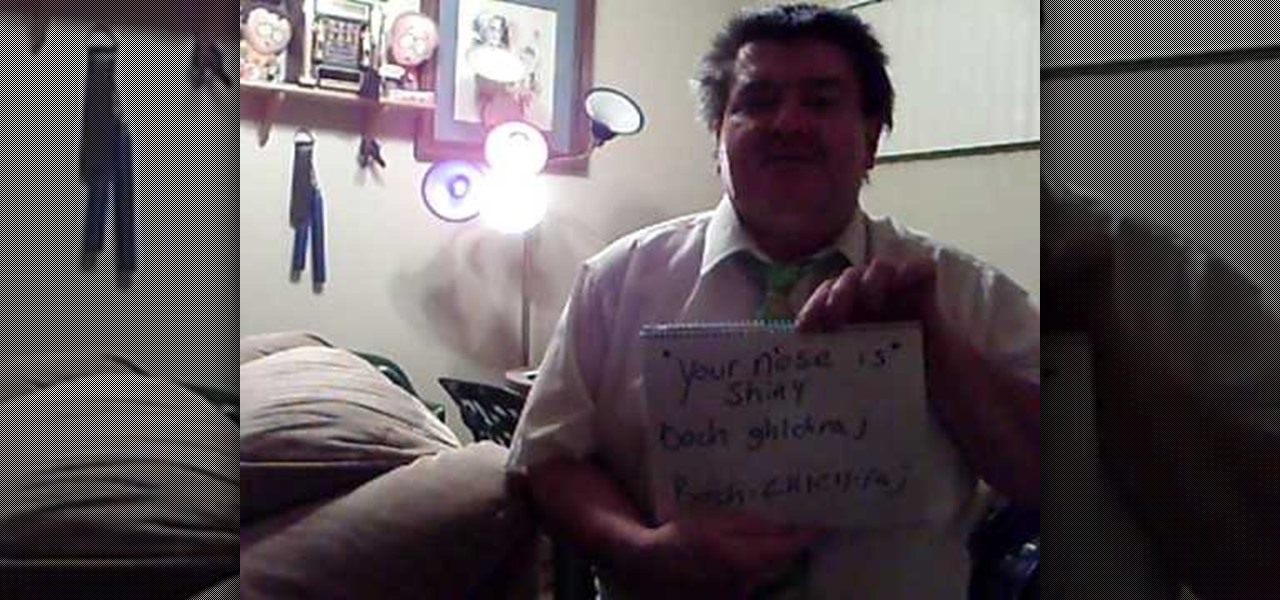
How To: Say basic words in Klingon
BoboWabatabe teaches how to say some basic words in Klingon. You can learn to say a few basic words like yes, no, and success in the Klingon language. Hear the words and look at the pronunciation and soon you'll have a few words in your Klingon vocabulary. The video doesn't bombard you with to many phrases, their simple and easy to repeat. Bobo likens the language to something like German in order for you to understand how the form should be.
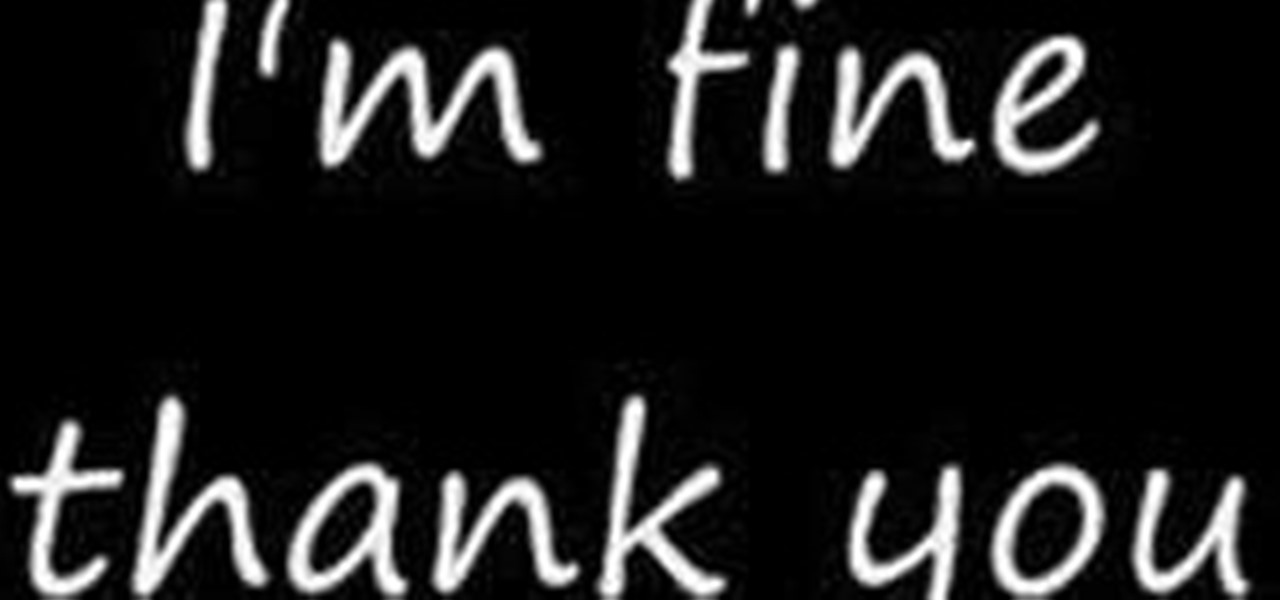
How To: Speak basic meeting and greeting phrases
Do you need to learn some basic French skills? This great vocabulary tutorial from learnlanguages1.googlepages.com will teach you some essential meeting and greeting phrases that will give you a jump start in speaking quickly and proficiently. It includes comprehensive context and pronunciation information that will save you hours of time and probably help you avoid a great deal of embarrassment. With this excellent series of free videos, you can greatly improve your French language skills qu...
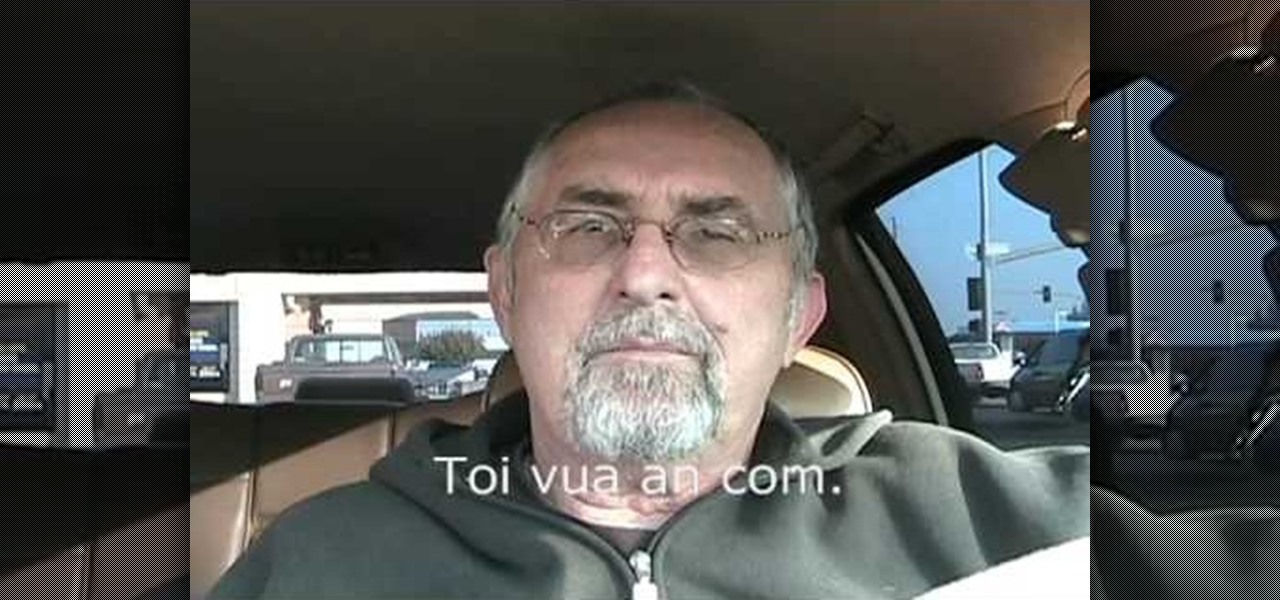
How To: Say "I am about to..." in Vietnamese
In this video, Bud Brown explains that it's useful to learn to say "I am about to (do something)" or "I just finished (doing something)" in another language. The Vietnamese word for "about to" is "sap" pronounced "sup". To say "I'm about to go out" in Vietnamese is "Toi sap di choi." "I'm about to eat" is "Toi sap di an com." To indicate that you just finished doing something, use the Vietnamese word "vua" pronounced "vuh". "I just finished eating" is "Toi vua an com." "I just finished workin...



